-
Posts
1,756 -
Joined
-
Last visited
Content Type
Profiles
Forums
Gallery
Events
Posts posted by Mark P
-
-
Hi Frankie;
thank you for posting the picture of Victory's cabin. I must go there again, not been for many years! I have seen the chequer-board pattern on the decks of cabins in models, as well. So painted canvas was used internally, without doubt.
I think, though, that we must at all times remember that 'absence of evidence is not evidence of absence'.
Doreltomin has sent me a link to a contemporary model of the Naval Yacht 'Old Portsmouth' from an auction catalogue. This model is attributed to the yacht in the year 1752. The entirety of the upper decks is covered in the same pattern of painted chequerboard, presumably on paper in the model's case, but it must represent canvas on the real vessel. There cannot have been any alternative material to use in those times.
I have also seen a contemporary model of an admiral's barge with painted canvas on the deck planking, at the NMM's model store.
I will try to put a link here: http://www.charlesmillerltd.com/catalogues/ms301013/lot0347.html
Doreltomin has also carried out research at the National Archive at Kew, into the building of the Royal Yacht 'Henrietta' in 1679. A letter from her master shipwright is there, in which he writes complaining about the late arrival of the copper for the kitchen funnel, and for coppering the mast.
I think that these two items of evidence must give rise to an acceptance that perhaps Royal Yachts and Naval Yachts at least, and maybe some other small vessels sometimes had painted canvas deck coverings, and/or (Speedwelll, as above, post #27, thanks Druxey) copper mast funnels at deck level. Regarding the mast funnels, it is also beyond doubt that in every painting of the Royal Caroline I have seen (four of them) in which it is possible to make out the lower masts, these are a pinky-red colour for the first 5 feet or so. I am happy to accept Doreltomin's written letter as evidence that this represents a copper funnel.
I will also carry out further research into Royal Caroline myself, and will see if there is any more mention of such things.
All the best,
Mark
- mtaylor, FatFingers and Archi
-
 3
3
-
Greetings gentlemen;
thank you for the suggestion. I have tried re-booting, with no success.
However, I have now created a new drawing, copied into it all the lines I have drawn in the original CAD drawing, and then imported a fresh copy of the original underlay draught to work on top of.
This has been successful, so far, and the arcs and other shapes appear during construction, as 'ghost' lines, as they always did previously.
Per: I have tried to check the nodes, but they are many. Additionally, there is no hidden layer or object that I know of in this drawing. However, I will keep your comment in mind, and try to find out more about this kind of problem.
All the best,
Mark P
-
Hi Jud, and thanks for the explanation.
The thing is, I am using three points (as mentioned in the first post) which is AutoCAD's default to draw arcs. Normally, after you define the beginning and the end, a ghost image of the arc appears, and changes radius according to where you move the cursor. The advantage of this is that it is possible to position the arc over those on the original draught and get a close fit, then click to lock the third point, after which the arc becomes a firm object.
The problem now is that the 'ghost' arc is no longer visible, and without seeing it, I have no idea of where to click for the third point.
All the best,
Mark
-
Hi Per;
Thank you for the comment. I will look into this, and see what I can do. I think you mean 'nodes' by the way? Thank you for your help.
Mark: thank you for the thought. I don't think I have done this, but I will check. I think what you are referring to is what is called 'model space' and 'paper space' now. Thank you again.
All the best,
Mark P
-
I have opened a new drawing and inserted a fresh background draught. If I then attempt to draw an arc or circle, this is fully visible during construction.
It would appear that somehow the attributes or properties of the inserted underlay in the first drawing have been altered in some way.
I hope that someone out there can suggest a possible reason, or I will have to start again; not a pleasant thought.
All the best,
Mark P
-
Hi Don;
Thank you for what is an eminently sensible suggestion. I have changed the layer of the underlay to a completely new, dedicated layer. Unfortunately, nothing else has changed.
The biggest puzzle for me here is that it was working fine, with any arc visible during construction, and then for some reason they stopped being so.
Thanks again,
Mark P
-
-
Greetings everyone;
I hope that someone might be able to help me correct something which has started happening, and I don't know why!
I am creating a draught of Royal Caroline, working with a digital image of an original draught loaded into a CAD drawing as an underlay.
Everything has been proceeding well, until a moment when arcs (and circles) that I am trying to draw no longer appear on top of the underlay during selection of the points (up until this moment part-drawn arcs had shown just fine) The arc now only appears when I select the third point (using the default 3-point arc method) This means that I have no idea what the arc will look like until I lock it in place by clicking the third point.
I have tried selecting the underlay, and using draw order to send it to the back, but still new arcs and circles are invisible until the size is locked.
I am using AutoCAD LT 2009, and the underlay was inserted as a raster image reference.
Does any fellow modeller have any suggestions as to how I can get my arcs back?

Many thanks in advance for any replies.
Mark P
-
Hi FatFingers;
Thank you for your reply, and for the time and trouble you have gone to to search these out.
I have a larger copy of the Bonhams image, but even at quite close quarters it is difficult to make out the deck, as only a small area of the fo'c's'le is visible. The deck here could be grey, or it could be planking in the shadow. Not really possible to be sure, as the viewpoint is low, and the deck is nearly end-on. This painting actually shows her later in her career, as Royal Charlotte.
The painting in the Victoria Gallery in Bath is a panoramic view of the arrival of Princess Charlotte, and Royal Caroline is not greatly detailed (she had been re-named Royal Charlotte for this event)
Your information about oilcloth is welcome. I have seen the name many times, but was never sure how it was made; only that it was meant to be water resistant/proof. Thank you for that.
All the best,
Mark
-
Hi Druxey;
I did not know that other models had the bottom of their mast a red-colour. There is a painting of Royal Caroline, in 1760 when she became the Royal Charlotte, which shows her with a pinky-red base to the foremast, which also appears to be octagonal.
But as to whether or not this is copper, I would be very pleased if Doreltomin could point me to a source for any of the information in his post.
All the best,
Mark P
-
Gentlemen, thank you for the further comments;
Greg: the frieze was definitely carved, in quite high relief, and to a much higher standard and finish than was usual for other vessels. The finished carvings, and much of the rest of the decoration, was gilded. All this came at a rather high cost.
Frankie: I think that if the artist wished to differentiate between surfaces in contrasting planes, he would have achieved this result by painting the deck planks as light-coloured planking, if that is what was visible. This would then have stood out very well against the red bulwarks.
Just to be sure, from your comment about only a narrow strip of deck being visible, perhaps you have missed the quite noticeable expanse of fo'c's'le deck shown, also in grey, all over.
The artist, John Cleveley, has a reputation for painting accurate portraits of ships, and worked at Deptford Dockyard, where Royal Caroline was built. I have written evidence that he worked on her during her building, so it cannot be doubted that he knew her well. It would seem highly unlikely that he would paint the deck of such an important vessel in a different colour to reality. His patrons, who were senior naval officers, many of whom sailed in Royal Caroline or in convoy with her, would have known immediately if he moved very far from a true likeness.
Again, though, thank you for taking the time to set out your thoughts.
All the best,
Mark P
-
Hi jbshan;
Frankie hasn't signed a written agreement not to infringe copyright rules! If the NMM thinks that I am overstepping the mark, my research opportunities could be drastically reduced.
Herewith another couple of images. I imagine that the grey roof to the companionway in one is a sheet of lead; especially as it functions as a step to reach the cabin roof.
The only ones that show areas of deck have already been posted at the beginning of this post.
-
Greetings Gentlemen, and thank you for the comments.
Druxey, I will see what I can post. As I understand Crown copyright, photographs can be posted on password-protected websites for research and education purposes. However, I only really took photos of details, as the light was poor, and the exposure time long. I will try to post something more, but the best shots of the decks are the two above. Also, I am not sure exactly who is the copyright holder of the Cleveley painting. I imagine it is actually the NMM, and not Crown copyright. I have a digital image of this painting from the Bridgeman Library, but it is not possible to zoom in as close as I was when I took the photos.
Doreltomin, your comments are very helpful. I knew that the stove pipe for the Royal Caroline was almost certainly copper, as I have found a mention of a copper chimney, but I assumed the mast was painted, and the chimney also to match. Thank you for adding your knowledge to this post. As they are both always shown as pink, in paintings from different periods, it was probably part of the crew's duties to keep them polished.
Are you able to give any sources for documents that describe the painted canvas deck covering in more detail? I would be very glad to find out more about this, as even if it is about Stuart period yachts, it will be very relevant as a precedent (some of those yachts survived well into the 18th century, as I am sure you are aware)
I have read about metal mast funnels being used in later periods to protect mast heads from chafing from the shrouds, etc, but not of their use at the base of the mast.
I will be carrying out more research at the National Archive at the end of the month, looking for more information about Royal Caroline. Hopefully this will turn up something more about this topic.
Again, many thanks for your input.
Dwaing, presumably this canvas was of a much finer weave, with a smoother surface. Was it painted with size, or a similar compound.
Thank you all again, gentlemen.
All the best,
Mark P
-
-
Hi Mark;
Thanks for the thought. I don't think it's intentionally off-colour, as the hull planking is the correct colour. Besides which, the decks are not really a noticeable part of the painting. It is not until you zoom in close that it becomes obvious that something is strange.
All the best,
Mark P
-
Hi everyone;
Thanks for the comments. The cabin amidships is part of the Royal suite of cabins, and the roof is indeed painted red. Some paintings show a couple of figures standing on this cabin roof, presumably including the captain, who otherwise would not have been able to see the rest of the crew very well.
Regarding the shadow, I agree that it is possible when looking at the aft deck that what we are seeing is the shadow of the sail (it can't be the shadow of the bulwarks, as the sun is on the starboard side: see the anchor shadow)
However, the entirety of the fo'c's'le deck is the same grey, with one area nearest the viewer a slightly lighter colour. There is a change of grey colour just this side of the mast and the galley chimney (yes, these are pinky-red! They are shown this colour in every painting, although the bottom of the mast was this colour only for about the first six feet). This shading of the grey area seems to me to indicate that most of the fo'c's'le deck is in shadow, but not the part nearest the viewer. So it cannot be shadow that is responsible for this grey all over the fo'c's'le deck.
And as the sail is braced hard round, it would be impossible for it to cast a shadow on the entire deck. It can be seen that the coat worn by one of the crewmen is part in sunlight, part in shadow. So any deck to his right would be in sunlight, hence the change in shade near the mast.
The hull of the ship's boat, whilst indeed partly shadowed, is still noticeably browny-gold, not grey. The adjacent deck is a very different colour. I am sure it is not shadow we are seeing.
All the best,
Mark P
-
Hi Matrim;
thank you for the reply. Everybody develops their own way of working, and if it works well, that's all we need. I thought that you would probably have your own system to avoid confusing frames, as it seems to be necessary. I had not really thought of using a temporary colour change. I'll keep it in mind as it might well be useful for other things.
All the best,
Mark P
-
Hi Matrim;
Excellent draughting!
One thought that might be of interest: when I have been copying/drawing a draught, I make each station line a different colour. Then, when the lines are drawn on the body plan, at the outer edges, where they overlap a lot, it is easier to distinguish which is which. I also make any datum marks on the body plan the same colour as the station line to which they belong.
All the best,
Mark P
-
One further thought:
Royal Caroline had her sea trials in early 1750, before she was finished. Quite possibly the painting shows her during these trials (there is no Royal Standard at the masthead, so the king was certainly not on board at this time) and perhaps the deck needed to be covered as it was not completely caulked, or the seams had not yet been filled off with pitch.
All the best,
Mark P
-
-
Hi Gentlemen, and thank you for your interest.
Druxey: the carved and gilded frieze of figures is well-detailed on the painting, and is a very close match for the draught of Royal Caroline which was made by Af Chapman, who was in the Deptford area close to the time of her building.
I have also found an itemised bill for decorating the Royal Caroline, which lists Mr Cleveley as responsible for painted panels, of shipping and other themes, in the King's rooms, and for re-furbishing the panel on the buffet, presumably removed from Caroline's predecessor.
It can therefore be a safe assumption that the picture of Royal Caroline painted by John Cleveley, from which the photos above are taken, was painted by him (in 1750) based on a great degree of close personal knowledge of her appearance.
You may also remember some earlier posts about a seat of ease at the beakhead, which is also drawn on Chapman's draught. It is just possible to make this out on the painting, although not clear; however, there is another painting of her by John Cleveley, in which the seat of ease is quite clearly shown.
Fatfingers: thank you for the idea; teak does go silvery over time, as do many other woods left to weather. I am not sure if timber from the Far East was being used at this time, though, in English shipyards, but it is something to consider, and a possible explanation.
A point against this is that the decks were almost certainly scrubbed (swabbed) every day, and at the time of the painting, Royal Caroline was still only months on from being launched, so the decks would not have been very old.
All the best,
Mark P
-
Hi Frankie;
Thanks for your thoughts, and herewith the requested photos. Apologies for the somewhat poor image quality, but these had to be taken without flash, so with a 1/4 second exposure.
My first thought on seeing this was that it was the shadow of the sails, but some areas of the deck appear in darker and lighter shades of the grey colour.
I fully agree with you that the decks of a Royal Yacht are likely to have been holy-stoned (comes from the men being on their knees, as in praying) even more assiduously than on a normal Navy vessel, which was normally every day. This kept the deck planking pale, not allowing dirt to stay there.
I also concur with your observations about the likelihood of canvas trapping moisture, and not lasting long, but I cannot think of anything else it could be.
I don't think that it is a fading of the oil paint, either, as the topside timbers are quite clearly the correct colour, and deck planking would normally be lighter than this.
Incidentally, the darker smudges near the crewmen on the fo'c's'le are coils of ropes laid out on the deck (no belaying pins here!)
And another incidentally: the black rail on the fo'c's'le is, I believe, not the final finished colour. I think it is the first stage in painting and then gilding (although red is normally the colour of the coat directly under the gilding) However, Royal Caroline went for her sea-trials, and even for her first trip with the King aboard, with quite a lot of her gilding and painting un-finished. As this painting is dated 1750, it seems quite reasonable to assume that it shows her in this state. She was launched 2 months before the end of 1749, but then had to be fitted out before going to sea. All other paintings show her with gilded rails.
Anyway, any suggestions as to what this grey-coloured deck might be would be most happily received!
All the best,
Mark P
-
Hello everyone;
I thought that my fellow modellers might be interested in the following document, which I found at the National Archive in England, whilst searching for a somewhat different subject.
This lists the prices, sizes and quantities of a delivery of glass made to Deptford Dockyard in November 1750.
The biggest pieces are quite large: 31" x 21 1/2", 3no. Their rarity and value is reflected in their price, £7.0.0 each, which is many times higher than the smaller, more numerous pieces.
Lower down in the list are some pieces of mirrored (silvered) glass, some of which are again quite large and expensive.
Clicking on the image should make it larger. If not, right-clicking on the image should bring up a menu with an option to 'open image in new window' option which makes it larger and easier to read.
All the best,
Mark P
- Jolley Roger, reklein, CaptainSteve and 3 others
-
 6
6
-



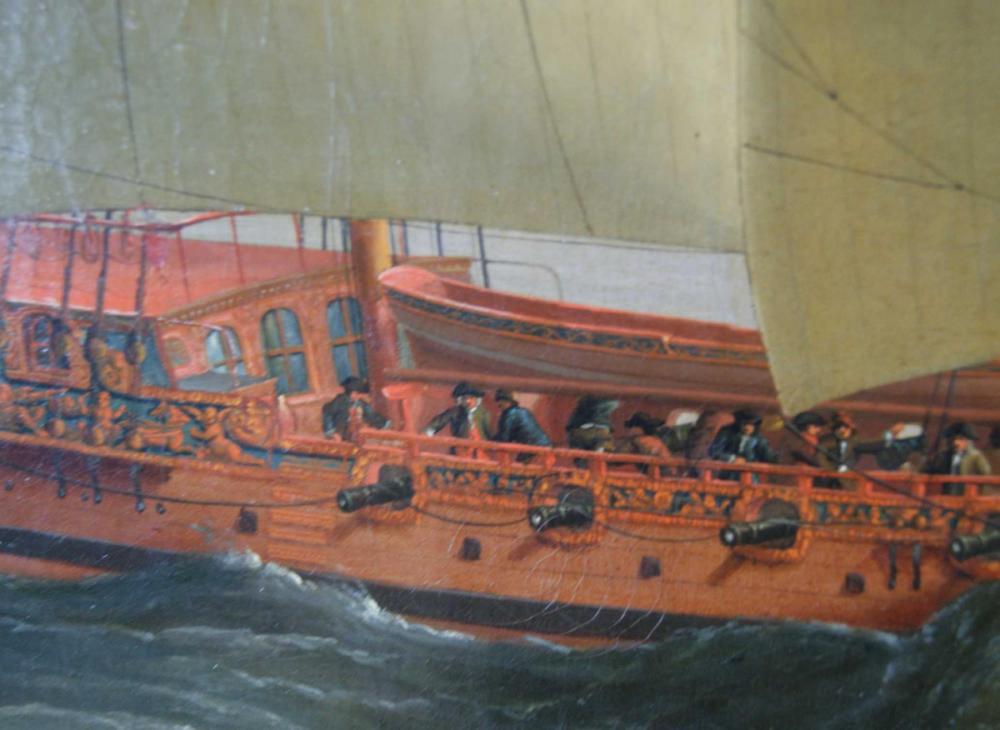
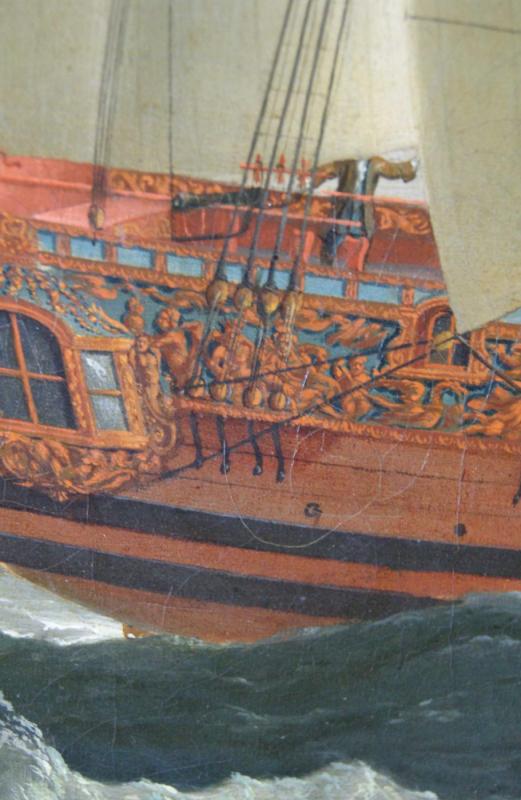
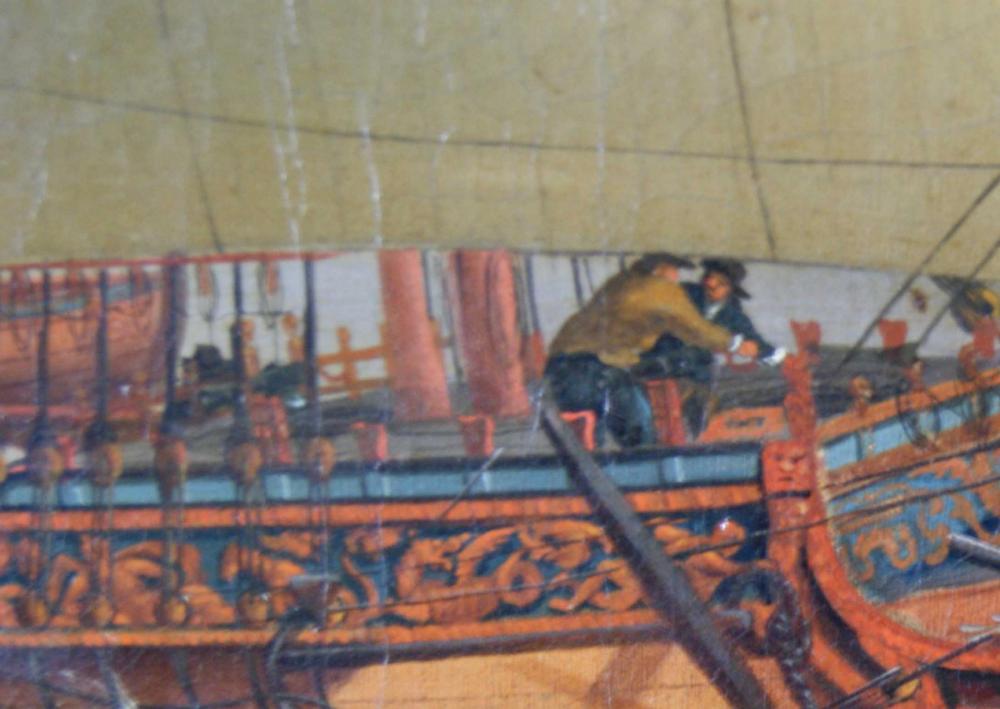
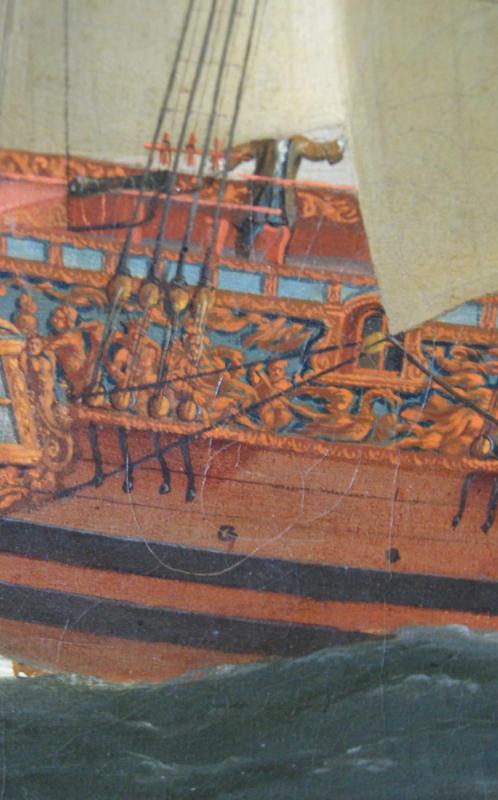
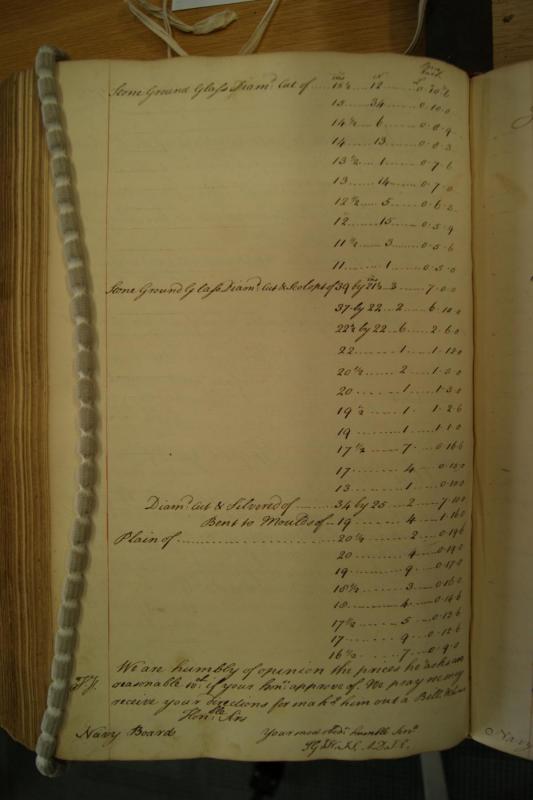
Royal Caroline, deck covering
in Building, Framing, Planking and plating a ships hull and deck
Posted · Edited by Mark P
Greetings everyone;
Unfortunately it appears that the link above does not work properly. The photos of the model can also be found on Charles Miller's website, auction catalogue for sale number 12, 30th October 2013. After a couple of clicks it is possible to get to a page-turning online catalogue. The model in question is on page 106 & 107.
Incidentally, it appears that Charles Miller's catalogues are well worth looking at for Naval and maritime items. They hold twice-yearly auctions of fine art, models, and memorabilia. With prices that are well beyond the pockets of most people, unfortunately.
All the best,
Mark P